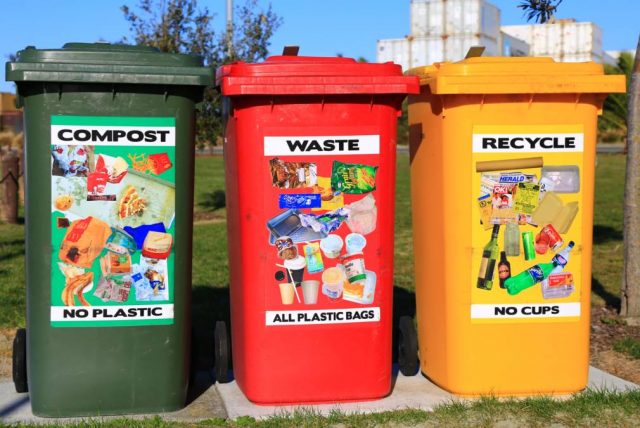Living sustainably has become a growing trend as people become more aware of the environmental challenges facing our planet. One such lifestyle that has gained momentum is zero-waste living. In this guide, we’ll explore the benefits, challenges, and practical tips for transitioning to a zero-waste lifestyle for a more sustainable future.
The Concept of Zero Waste Living
Zero waste living is the practice of reducing your ecological footprint by minimizing waste through the five Rs: refuse, reduce, reuse, recycle, and rot. While it’s nearly impossible to completely eliminate waste, the goal is to strive for a circular economy where nothing is discarded, and resources are reused or transformed into something useful.
Incorporating the Principles in Daily Habits
Adopting a zero-waste lifestyle is not only about the decisions we make when shopping; it also involves incorporating zero-waste principles into our daily habits. Simple tasks like turning off the faucet while brushing your teeth, repairing broken items instead of discarding them, and using cloth napkins instead of paper towels can make a significant difference. By focusing on small and attainable changes, the transition to a zero-waste lifestyle becomes more manageable and enjoyable.
Energy Choices
Making sustainable choices also includes considering the energy we consume. There are options out there for more environmentally friendly power sources. For instance, Texas electricity providers offer renewable energy plans, enabling homeowners to reduce their carbon footprint by choosing greener power sources. It’s essential to research and select energy providers that align with your zero waste and sustainability goals.
The Challenges
- Access to zero-waste products: Depending on your location, access to sustainable alternatives can be limited. Additionally, zero-waste products are sometimes more expensive than their conventional counterparts.
- Time and effort: Transitioning to a zero-waste lifestyle requires planning and expending more effort than simply purchasing disposable products.
- Perfectionism: Some people may find it discouraging to keep up with a zero-waste lifestyle due to the unrealistic expectation of complete waste elimination.
The Benefits
- Climate change mitigation: By reducing waste and reusing materials, we lessen the demand for resource extraction, manufacturing, transportation, and disposal, decreasing greenhouse gas emissions.
- Conserving resources: Embracing a zero-waste lifestyle helps preserve natural resources by reusing and repurposing items rather than discarding them.
- Improved public health: Reducing our waste generation results in fewer pollutants in the air and water, leading to a healthier environment for people and wildlife.
- Economic benefits: Minimizing waste saves money by reducing the need for new products and disposal costs. It also supports the growth of sustainable industries and job creation.
Adjusting Expectations
It’s important to remember that zero-waste living is a journey rather than an overnight transformation. Embrace the fact that there will be occasional setbacks, and focus on the progress you’re making rather than striving for perfection. Celebrate the small victories, such as reducing your trash output or finding an eco-friendly alternative to a beloved product. You’ll find that these achievements motivate you to continue on your path toward a more sustainable way of living.
Fostering a Supportive Community
Transitioning to a zero-waste lifestyle is much easier when you have a supportive community around you. Join local zero-waste groups, attend workshops, or participate in online forums to learn and share ideas with like-minded individuals. Engaging with others also offers motivation and encouragement to persevere and find creative solutions to the challenges that arise on your journey toward a more sustainable lifestyle.
Practical Tips
As we’ve seen, the benefits of this lifestyle far outweigh the challenges, so let’s dive into some practical tips to get started on your zero-waste journey:
Refuse and Reduce
Refuse single-use plastics, such as bags, straws, and cutlery. Reduce your consumption by carefully considering purchases and opting for durable, high-quality items. Eliminate junk mail by unsubscribing from catalogs and using paperless billing.
Reuse and Repurpose
Use reusable bags, containers, and water bottles to reduce single-use waste. Repurpose items, such as turning old clothes into rags, or reusing glass jars for storage. Donate or swap items with friends and family to give unwanted items a new life.
Recycle and Rot
Ensure you’re recycling correctly by checking local recycling guidelines. Start a compost pile or use a composting service for organic waste. Upcycle items when possible, transforming them into something new and useful.
Make Sustainable Choices
Shop at local farmers’ markets or buy in bulk to minimize packaging waste. Opt for products made from sustainable or recycled materials. Support businesses that prioritize sustainability and ethical practices.
Conclusion
Transitioning to a zero-waste lifestyle is a gradual process that requires dedication and a willingness to adapt. By implementing the five Rs and making sustainable choices, not only can we reduce our environmental impact, but we can also contribute to a healthier, more sustainable future for ourselves and generations to come.


